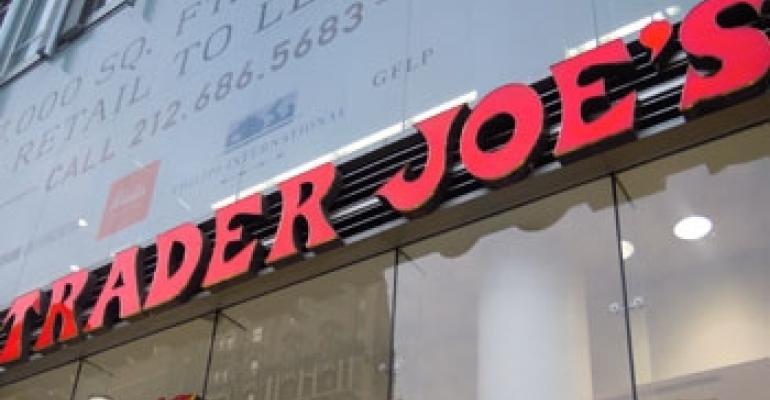
Trader Joe’s reported efforts to expand its store size are getting kudos from industry insiders.
Officials from the offbeat grocery chain won’t comment on the record about its current expansion strategy, but brokers on the ground say Trader Joe’s has been looking at a lot of real estate recently, particularly in smaller big-box formats. This would be a departure from its smaller stores, which have historically ranged between 8,000 sq. ft. and 12,000 sq. ft.
In Houston, for example, Trader Joe’s considered as many as six new sites in the past few months, according to Jason Baker, cofounder and principal of Houston-based retail brokerage firm Baker Katz and a partner with X Team International, a retail real estate brokerage alliance.
Most of those sites have been between 15,000 sq. ft. and 20,000 sq. ft. and were located in highly affluent areas with high levels of education.
(Trader Joe’s ended up signing leases for two stores in the metro, Baker says, including a ground-up unit in Woodlands, Texas and a conversion of a former movie theater at the River Oaks Shopping Center in River Oaks, Texas.)
This will be Trader Joe’s first entry into the Texas market. The retailer’s website also lists upcoming store openings in Arlington, Va., Naples, Fla., Pittsburgh and Rochester, N.Y.
In fact, the chain has been diligently looking at almost every mid-size big-box opportunity that has hit the market over the past year, says Andy Graiser, co-president of real estate consulting and advisory firm DJM Realty, including vacant Borders and Linens ’n Things stores. Last year, for instance, Trader Joe’s moved into a 40,000-sq.-ft.-plus space in a former Barnes & Noble store in New York City.
“Even though their footprint is under 15,000 square feet, they are still looking at all the sites,” Graiser says. “Because they are such a good credit tenant, some of the landlords are willing to redevelop the stores for them.”
Good move?
There’s been some debate in the media about whether going bigger might take Trader Joe’s too far away from its roots as a quirky, smaller operator. And the smaller stores have served it well in urban markets, where finding locations over a certain size is often not an option, says Baker.
But given how productive Trader Joe’s stores are, increasing the size of new buildings makes sense in certain cases, notes David J. Livingston, a Waukesha, Wis.-based supermarket consultant.
In visiting the chain’s stores and speaking to store staff, Livingston has been able to estimate that 12,000-sq.-ft. Trader Joe’s stores average roughly $1,300-per-sq.-ft. in sales annually.
“I found Trader Joe’s to be the highest sales-per-square-foot grocer in the market,” Livingston says. “They are going a little larger, but they are not going extremely larger and I think it makes sense.”
Going a little bigger might give the chain the opportunity to expand its merchandise selection to include more consumables and non-food grocery items, adds Craig Johnson, president of Customer Growth Partners, a New Canaan, Conn.-based consulting firm.
“In many ways, Trader Joe’s is like a Wegman’s writ small,” Johnson says. “It’s a nice spot in the market.”
In Livingston’s view, the best locations for Trader Joe’s stores are in areas with high income levels and high education levels, in close proximity to bigger, upscale supermarkets like Wegman’s and Whole Foods, where Trader Joe’s can feed off the existing shopper traffic.

